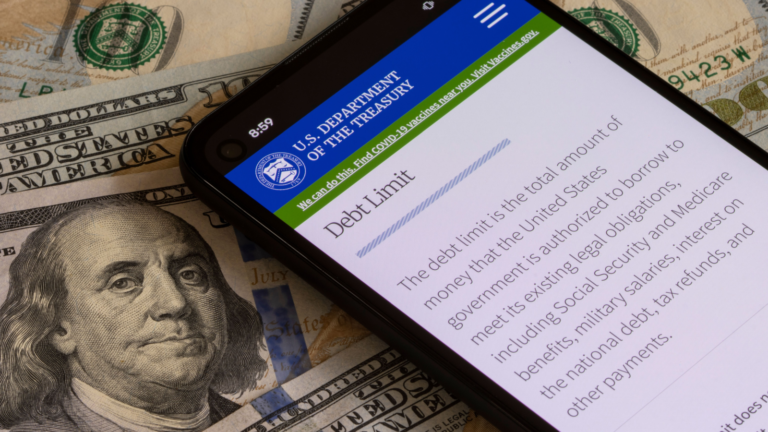Stocks and most risk assets are selling off today, as investors face off against yet another macro headwind. Today is the day that many economists predict the U.S. will hit its debt limit. The country’s $31.4 trillion debt ceiling will be breached, which will limit the ability of the government to fund certain operations.
Generally speaking, every time the government has hit its debt limit, it’s raised its borrowing ceiling. Thus, investors in the bond market appear to be pricing in little chance of default.
However, the fact that House Republicans are likely to push for austerity measures in order to pass a funding bill means that this time, we could be pushed closer to the brink than in previous scenarios. Accordingly, while the U.S. government has never defaulted on its debt, and certain accounting mechanisms can keep the government funded through June, there’s a tight window for politicians to find common ground.
Here’s a rundown of what a potential downside scenario may look like for investors.
Debt Limit Impasse Could Lead to Serious Stock Market Weakness
It’s hard to say exactly how hard the stock market would plunge in a scenario where a default becomes reality. We’ve never seen that happen, so it’s really a conversation most investors appear to feel better off avoiding.
That said, certain sectors which are reliant on government funding are starting to feel some pain. Automakers and electric vehicle (EV) companies, which have significant backing from recent U.S. infrastructure bills, could see a significant near-term downside. If these companies are unable to access growth capital for their businesses, the adoption of EVs could take a back seat, for the time being.
Many investors may pull their money
out of government debt funds and create a situation where interest rates rise even further. This could boost deposits at FDIC-insured banks, but could also result in more near-term pain for an economy that’s already on the edge. (Selling pressure on bonds tends to lead to higher interest rates).
Indeed, if the U.S. government was a company (which it isn’t), investors would be getting worried right now. The prospect of a default is a risk that shouldn’t have to be priced into “risk-free” assets such as Treasurys. However, this may be the case in the coming weeks.
On the date of publication, Chris MacDonald did not have (either directly or indirectly) any positions in the securities mentioned in this article. The opinions expressed in this article are those of the writer, subject to the InvestorPlace.com Publishing Guidelines.

